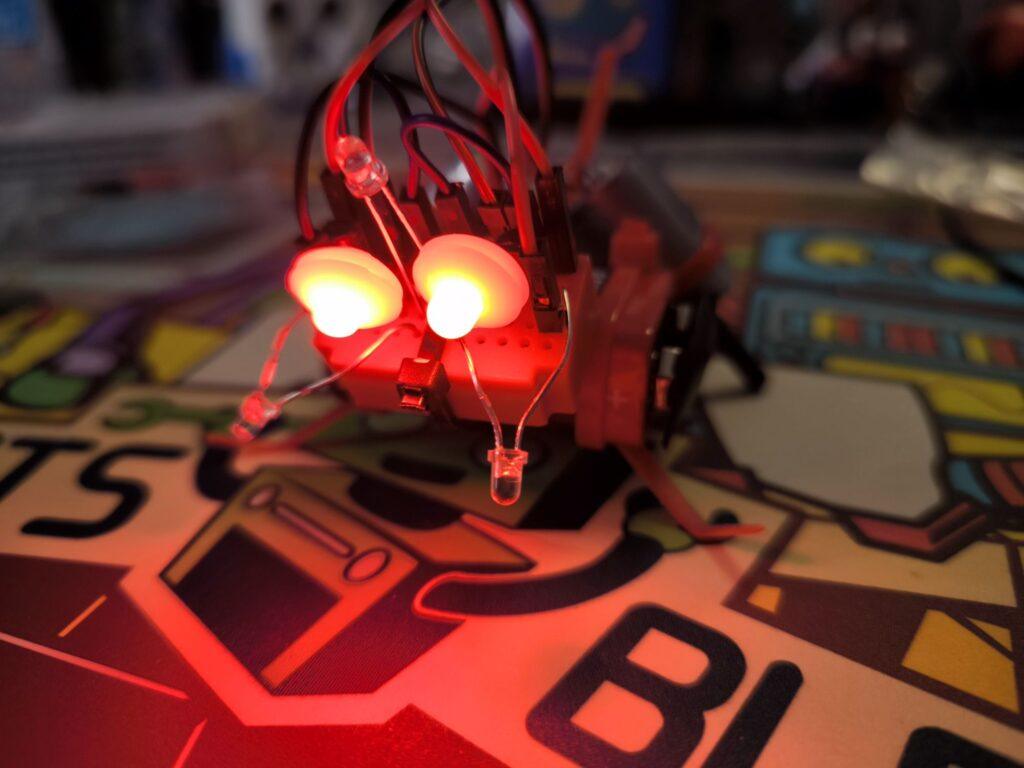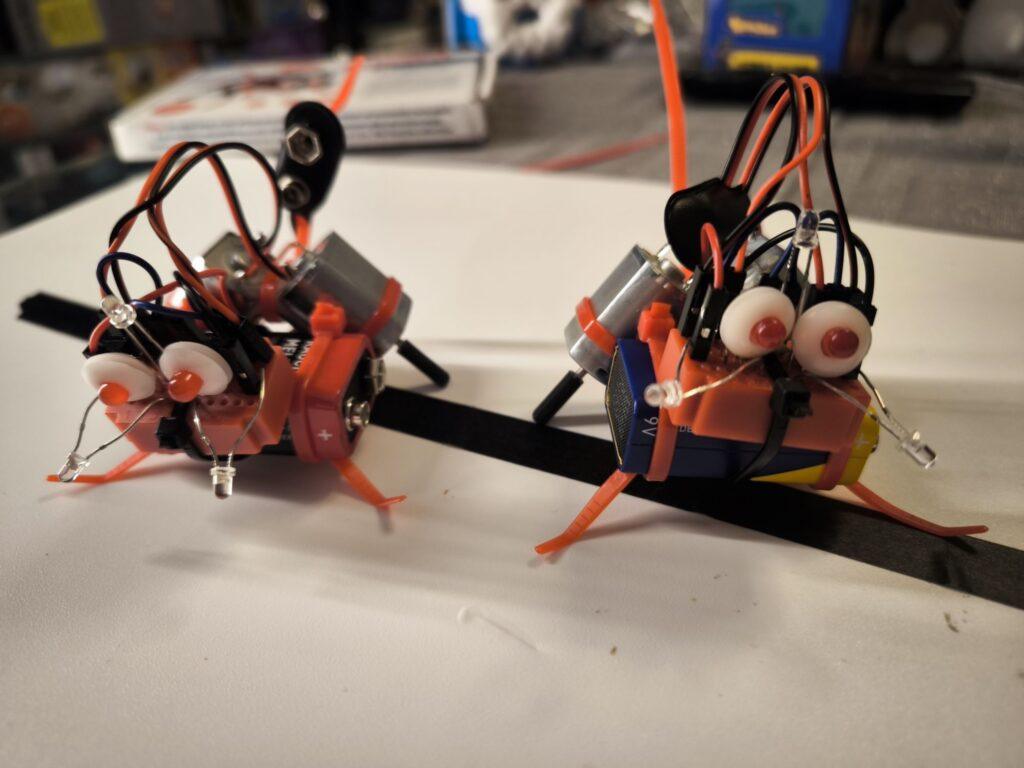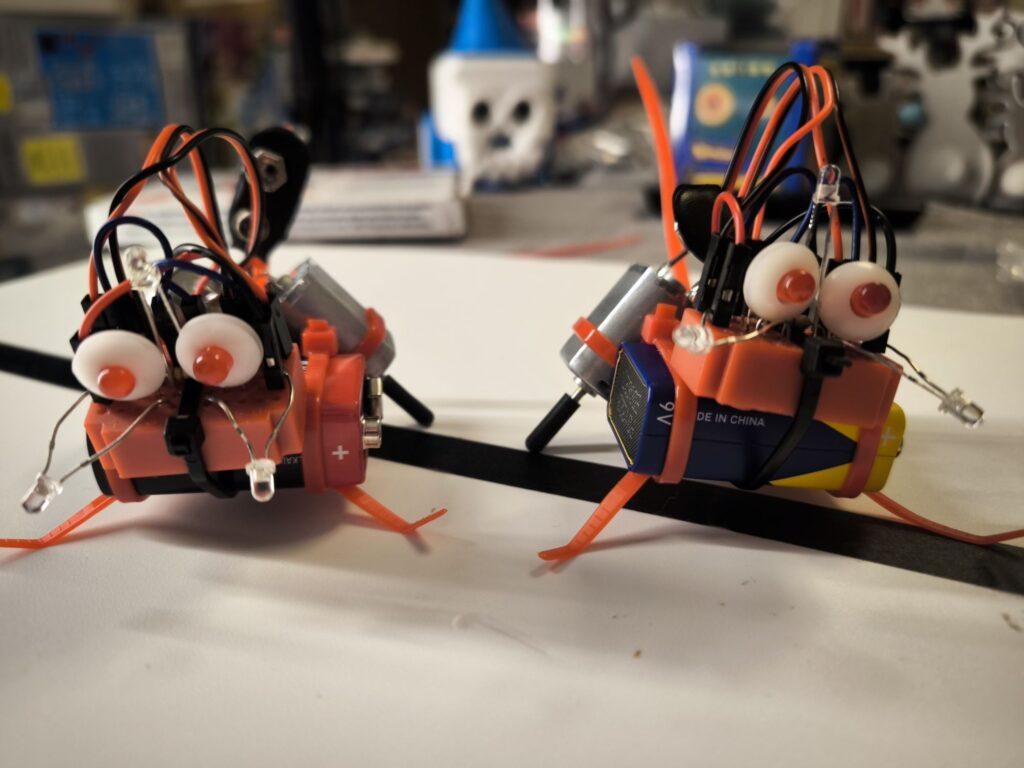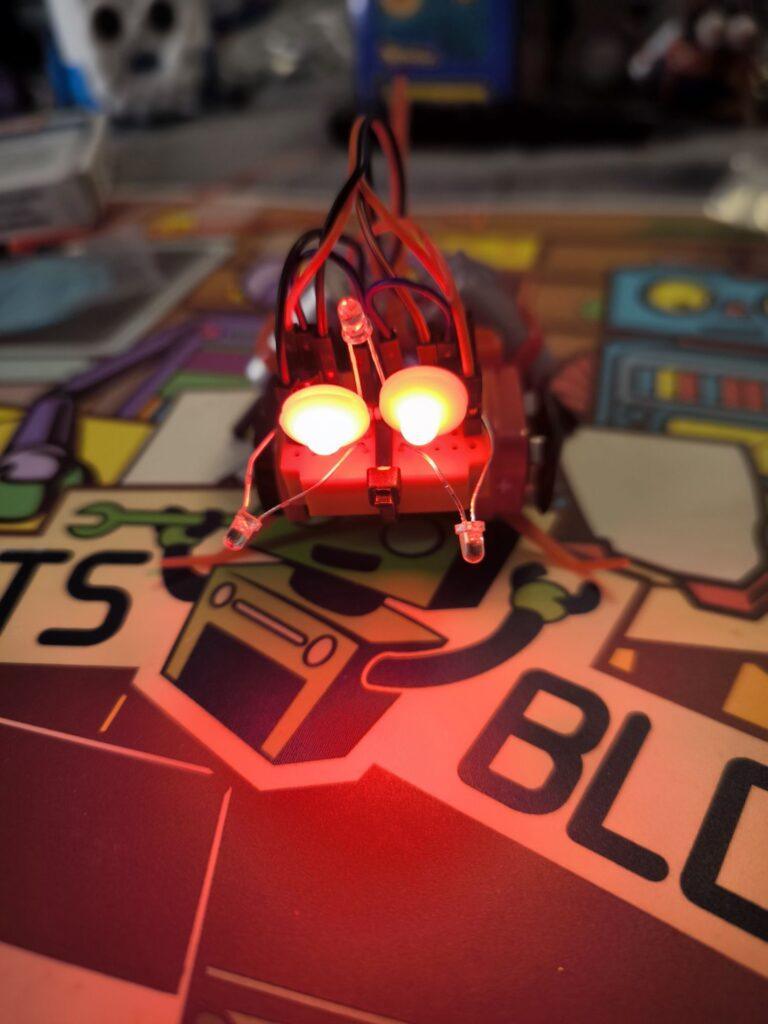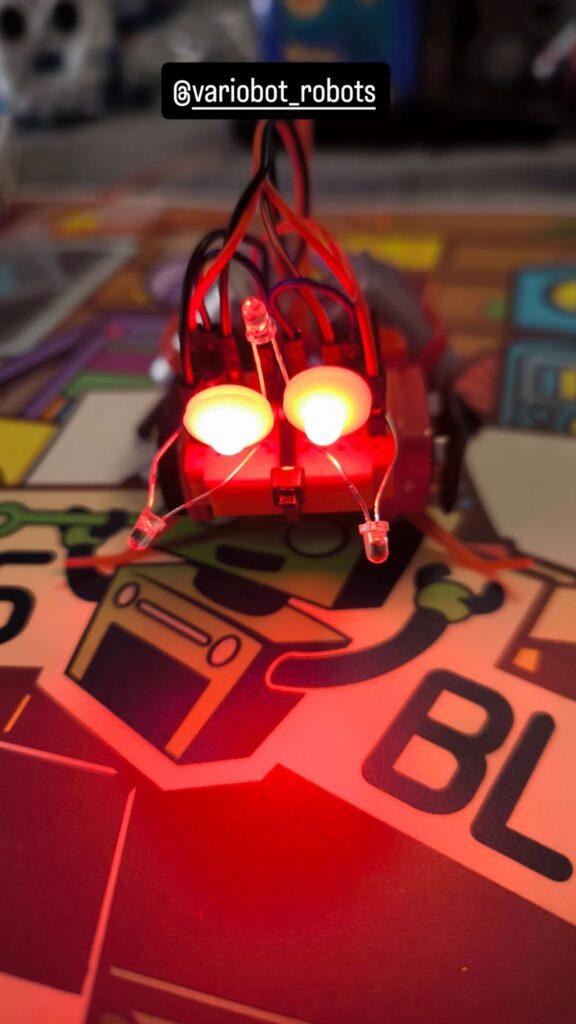Archiv der Kategorie: Robots-Blog Video Creations
Volker Spanier präsentiert neuen Epson 6-Achs-Roboter Cobot AX6 im Robots-Blog Interview auf automatica 2025
Creativity in motion: The modular robot Otto from HP Robots
The HP Robots Otto is a versatile, modular robot designed specifically for educational purposes. It offers students and teachers an exciting opportunity to immerse themselves in the world of robotics, 3D printing, electronics and programming. The robot was developed by HP as part of their robotics initiative and is particularly suitable for use in science, technology, engineering and mathematics (STEM) classes.
Key features of Otto:
- Modular design: Otto is a modular robot that allows students to build, program and customize it through extensions. This promotes an understanding of technology and creativity. The modular structure allows various components such as motors, sensors and LEDs to be added or replaced, which increases the learning curve for students.
- Programmability: The robot can be programmed with various programming languages, including block-based programming for beginners and Python and C++ for advanced programmers. This diversity allows students to continuously improve their coding skills and adapt to the complexity of the tasks.
- Sensors and functions: Equipped with ultrasonic sensors for obstacle detection, line tracking sensors and RGB LEDs, Otto offers numerous interactive possibilities. These features allow students to program complex tasks such as navigating courses or tracing lines. The sensors help to detect the environment and react accordingly.
- 3D printing and customizability: Students can design Otto’s outer parts themselves and produce them with a 3D printer. This allows for further personalization and customization of the robot. This creative freedom not only promotes technical understanding, but also artistic skills. Own parts can be designed and sensors can be attached to desired locations.
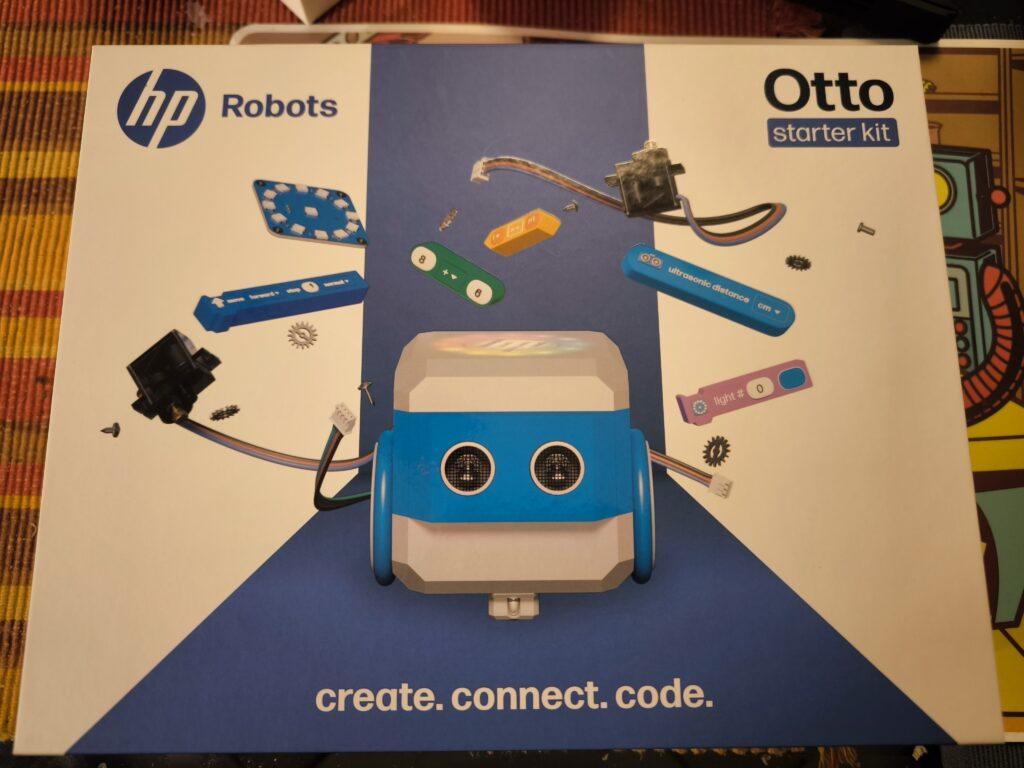
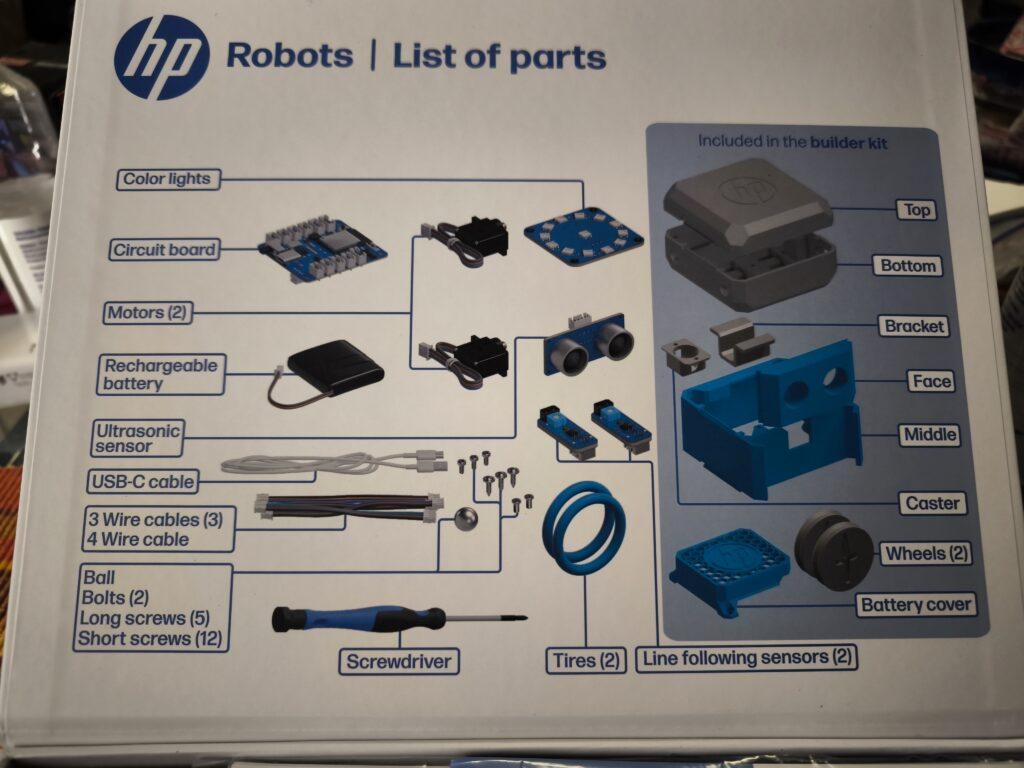
Educational approach:
Otto is ideal for use in schools and is aimed at students from the age of 8. Younger students can work under supervision, while older students from the age of 14 can also use and expand the robot independently. The kit contains all the necessary components to build a functioning robot, including motors, sensors, and a rechargeable battery.
Programming environments:
Otto is programmed via a web-based platform that runs on all operating systems. This platform offers different modes:
- Block-based programming: Similar to Scratch Jr., ideal for beginners. This visual programming makes it easier to get started in the world of programming and helps students understand basic concepts such as loops and conditions.
- Python: A Python editor is available for advanced users. Python is a popular language that works well for teaching because it is easy to read and write. Students can use Python to develop more complex algorithms and expand their programming skills.
- C++: Compatible with the Arduino IDE for users who have deeper programming knowledge. C++ offers a high degree of flexibility and allows students to access the hardware directly, allowing for their own advanced projects.
Expansion Kits:
In addition to the Starter Kit, there are several expansion kits. All expansion kits require the starter kit, as they are built on top of it.
Emote Expansion Kit:
- It includes components such as an LED matrix display, OLED display, and an MP3 player that allow the robot to display visual and acoustic responses.
- This kit is particularly suitable for creative projects where Otto should act as an interactive companion.
- The emote kit allows Otto to show emotions, mirror human interactions, and develop different personalities.
Sense Expansion Kit:
- With the Sense Kit, Otto can perceive its surroundings through various sensors.
- Included are sensors for temperature, humidity, light and noise as well as an inclination sensor. These enable a wide range of interactions with the environment.
- The kit is ideal for projects that focus on environmental detection and data analysis.
Interact Expansion Kit:
- The Interact kit expands Otto’s tactile interaction capability through modules such as push buttons, rotary knobs and accelerometers.
- It enables precise inputs and reactions, as well as measurement of acceleration.
- This kit is great for playful activities and interactive games.

Invent Expansion Kit:
- The Invent kit is specifically designed to encourage users‘ creativity. It allows the individual adaptation of Otto’s functionalities and design through 3D printing and additional modules as well as compatible clamping blocks.
- Users can design and print new accessories to make the robot unique.
- Equip Otto with legs and teach him to walk or make him fit for outdoor use off-road with chains.
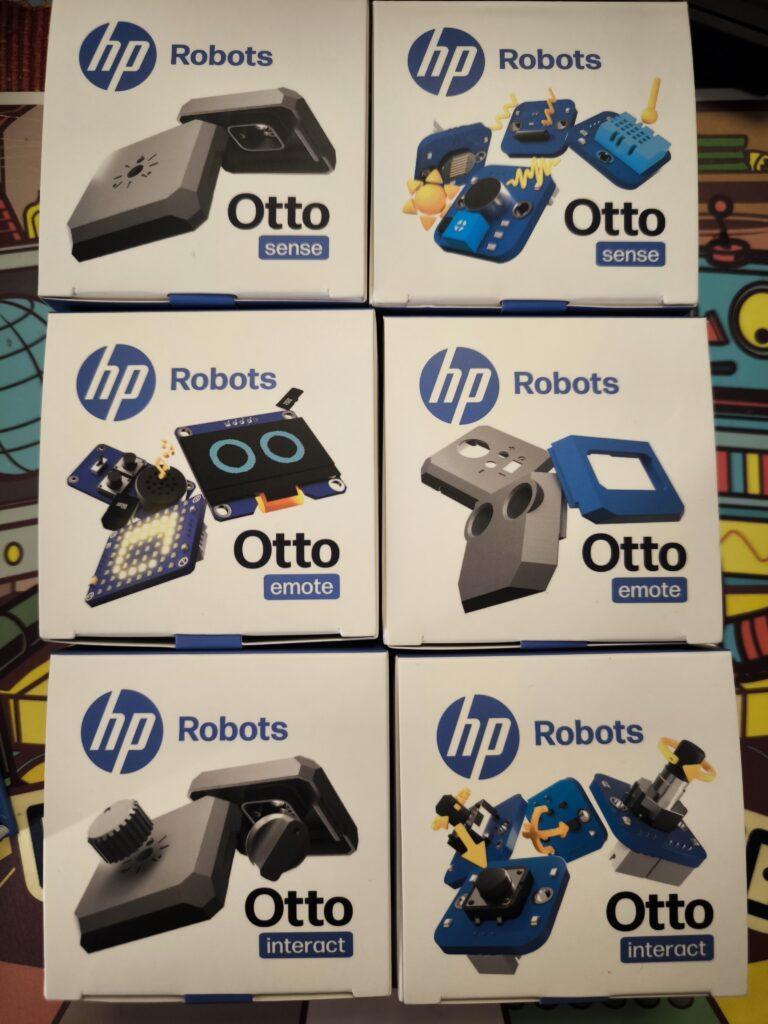
Use in the classroom:
Otto comes with extensive resources developed by teachers. These materials help teachers design effective STEM lessons without the need for prior knowledge. The robot can be used both in the classroom and at home. The didactic materials include:
- Curricula: Structured lesson plans that help teachers plan and execute lessons.
- Project ideas and worksheets: A variety of projects that encourage students to think creatively and expand their skills.
- Tutorials and videos: Additional learning materials to help students better understand complex concepts.
Conclusion:
The HP Robots Otto is an excellent tool for fostering technical understanding and creativity in students. Thanks to its modular design and diverse programming options, it offers a hands-on learning experience in the field of robotics and electronics. Ideal for use in schools, Otto provides teachers with a comprehensive platform to accompany students on an exciting journey into the world of technology. In particular, Otto’s versatility through the 3D-printed parts and expansion packs offers the opportunity to build the personal learning robot.
Kreativität in Bewegung: Der modulare Roboter Otto von HP Robots
Der HP Robots Otto ist ein vielseitiger, modularer Roboter, der speziell für Bildungszwecke entwickelt wurde. Er bietet Schülern und Lehrern eine spannende Möglichkeit, in die Welt der Robotik, 3D-Druck, Elektronik und Programmierung einzutauchen. Der Roboter wurde von HP als Teil ihrer Robotik-Initiative entwickelt und ist besonders für den Einsatz im MINT-Unterricht (Mathematik, Informatik, Naturwissenschaften und Technik) geeignet.
Hauptmerkmale von Otto:
- Modularer Aufbau: Otto ist ein modularer Roboter, der es Schülern ermöglicht, ihn zu bauen, zu programmieren und durch Erweiterungen individuell anzupassen. Dies fördert das Verständnis für Technik und Kreativität. Die modulare Struktur erlaubt es, verschiedene Komponenten wie Motoren, Sensoren und LEDs hinzuzufügen oder zu ersetzen, was die Lernkurve für Schüler erweitert.
- Programmierbarkeit: Der Roboter kann mit verschiedenen Programmiersprachen programmiert werden, darunter blockbasierte Programmierung für Anfänger sowie Python und C++ für Fortgeschrittene. Diese Vielfalt ermöglicht es Schülern, ihre Programmierfähigkeiten kontinuierlich zu verbessern und sich an die Komplexität der Aufgaben anzupassen.
- Sensoren und Funktionen: Ausgestattet mit Ultraschallsensoren zur Hinderniserkennung, Linienverfolgungssensoren und RGB-LEDs bietet Otto zahlreiche interaktive Möglichkeiten. Diese Funktionen ermöglichen es Schülern, komplexe Aufgaben wie das Navigieren durch Parcours oder das Verfolgen von Linien zu programmieren. Die Sensoren helfen dabei, die Umgebung zu erkennen und entsprechend zu reagieren.
- 3D-Druck und Anpassbarkeit: Schüler können Ottos äußere Teile selbst entwerfen und mit einem 3D-Drucker herstellen. Dies ermöglicht eine weitere Personalisierung und Anpassung des Roboters. Diese Kreativfreiheit fördert nicht nur technisches Verständnis, sondern auch künstlerische Fähigkeiten. Eigene Teile können entworfen und Sensoren an gewünschten Stellen angebracht werden.


Bildungsansatz:
Otto ist ideal für den Einsatz in Schulen gedacht und richtet sich an Schüler ab 8 Jahren. Jüngere Schüler können unter Aufsicht arbeiten, während ältere Schüler ab 14 Jahren den Roboter auch eigenständig nutzen und erweitern können. Das Kit enthält alle notwendigen Komponenten, um einen funktionierenden Roboter zu bauen, einschließlich Motoren, Sensoren und einer wiederaufladbaren Batterie.
Programmierumgebungen:
Die Programmierung von Otto erfolgt über eine webbasierte Plattform, die auf allen Betriebssystemen läuft. Diese Plattform bietet verschiedene Modi:
- Blockbasierte Programmierung: Ähnlich wie Scratch Jr., ideal für Anfänger. Diese visuelle Programmierung erleichtert den Einstieg in die Welt der Programmierung und hilft Schülern, grundlegende Konzepte wie Schleifen und Bedingungen zu verstehen.
- Python: Für fortgeschrittene Benutzer steht ein Python-Editor zur Verfügung. Python ist eine beliebte Sprache, die sich gut für den Unterricht eignet, da sie einfach zu lesen und zu schreiben ist. Schüler können mit Python komplexere Algorithmen entwickeln und ihre Fähigkeiten im Bereich der Programmierung erweitern.
- C++: Kompatibel mit der Arduino IDE für Nutzer, die tiefere Programmierkenntnisse haben. C++ bietet eine hohe Flexibilität und ermöglicht es Schülern, direkt auf die Hardware zuzugreifen, was eigene fortgeschrittene Projekte ermöglicht.
Expansion/Erweiterungs Kits:
Zusätzlich zum Starter Kit gibt es mehrere Erweiterungskits. Alle Erweiterungskits setzen das Starter-Kit voraus, da sie auf dessen Basis aufgebaut werden.
Emote Expansion Kit:
- Es enthält Komponenten wie ein LED-Matrix-Display, OLED Display und einen MP3-Player, die es dem Roboter ermöglichen, visuelle und akustische Reaktionen darzustellen.
- Dieses Kit eignet sich besonders für kreative Projekte, bei denen Otto als interaktiver Begleiter fungieren soll.
- Das Emote-Kit ermöglicht es Otto, Emotionen zu zeigen, menschliche Interaktionen zu spiegeln und verschiedene Persönlichkeiten zu entwickeln.
Sense Expansion Kit:
- Mit dem Sense-Kit kann Otto seine Umgebung durch verschiedene Sensoren wahrnehmen.
- Enthalten sind Sensoren für Temperatur, Luftfeuchtigkeit, Licht und Geräusche sowie ein Neigungssensor. Diese ermöglichen vielfältige Interaktionen mit der Umwelt.
- Das Kit ist ideal für Projekte, die sich auf Umwelterkennung und Datenanalyse konzentrieren.
Interact Expansion Kit:
- Das Interact-Kit erweitert Ottos Fähigkeit zur taktilen Interaktion durch Module wie Drucktasten, Drehknöpfe und Beschleunigungsmesser.
- Es ermöglicht präzise Eingaben und Reaktionen sowie Messung der Beschleunigung.
- Dieses Kit eignet sich hervorragend für spielerische Aktivitäten und interaktive Spiele.
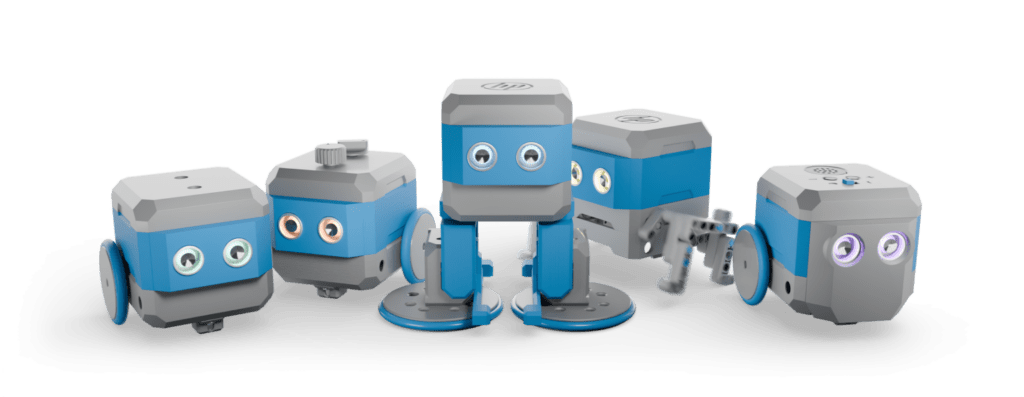
Invent Expansion Kit:
- Das Invent-Kit ist speziell darauf ausgelegt, die Kreativität der Benutzer zu fördern. Es erlaubt die individuelle Anpassung von Ottos Funktionalitäten und Design durch 3D-Druck und zusätzliche Module sowie kompatible Klemmbausteine.
- Benutzer können neue Zubehörteile entwerfen und drucken, um den Roboter einzigartig zu machen.
- Statte Otto mit Beinen aus und bring ihm das Laufen bei oder mache ihn mit Ketten fit für den Outdoor Einsatz im Gelände.

Einsatz im Unterricht:
Otto wird mit umfangreichen Ressourcen geliefert, die von Lehrern entwickelt wurden. Diese Materialien unterstützen Lehrer dabei, einen effektiven MINT-Unterricht zu gestalten, ohne dass Vorkenntnisse erforderlich sind. Der Roboter kann sowohl im Klassenraum als auch zu Hause eingesetzt werden. Die didaktischen Materialien umfassen:
- Lehrpläne: Strukturierte Unterrichtspläne, die den Lehrern helfen, den Unterricht zu planen und durchzuführen.
- Projektideen und Arbeitsblätter: Eine Vielzahl von Projekten, die Schüler dazu anregen, kreativ zu denken und ihre Fähigkeiten zu erweitern.
- Tutorials und Videos: Zusätzliche Lernmaterialien, die Schülern helfen, komplexe Konzepte besser zu verstehen.
Fazit:
Der HP Robots Otto ist ein hervorragendes Werkzeug zur Förderung von technischem Verständnis und Kreativität bei Schülern. Durch seine modulare Bauweise und die vielfältigen Programmiermöglichkeiten bietet er eine praxisorientierte Lernerfahrung im Bereich der Robotik und Elektronik. Otto ist ideal für den Einsatz in Schulen und bietet Lehrern eine umfassende Plattform, um Schüler auf eine spannende Reise in die Welt der Technologie zu begleiten. Besonders Ottos Vielseitigkeit durch die 3D-gedruckten Teile und Erweiterungspakete bieten die Möglichkeit, den persönlichen Lernroboter zu bauen.
Robots-Blog showing all the robots at Spielwarenmesse Nuremberg 2025
Playtastic KI-Roboter mit ChatGPT-Assistent
Nach dem Auspacken des Roboters hatte ich den Eindruck, ein Tablet auf Rädern zu meiner Robotersammlung hinzuzufügen. Der kleine Roboter, der sich selbst „Anna“ nennt, wie ich später herausfinden sollte, hatte auf jeden Fall ein Android-Tablet als Gesicht. Ein Tablet-Roboter.
Nach dem Einschalten erwartete mich jedoch nicht der übliche Einrichtungsprozess, wie er bei Android-Geräten üblich ist. Stattdessen wurde ich mit Musik und einem kurzen Animationsvideo begrüßt. Danach landete ich, nach einer kurzen Wartezeit (die nur beim ersten Start auftrat), auf einer kindlich-verspielten App-Übersicht. Meine erste Idee war, im Einstellungsmenü zunächst eine Verbindung zum WLAN herzustellen. Im Handbuch hatte ich bereits gelesen, dass der Roboter nur mit einem 2,4-GHz-WLAN kompatibel ist. Das WLAN meiner FritzBox arbeitet im Dual-Mode und stellt sowohl ein 5-GHz- als auch ein 2,4-GHz-Signal zur Verfügung. Der Roboter fand dieses WLAN, fragte nach dem Passwort, bestätigte die richtige Eingabe und verband sich – allerdings nur für wenige Sekunden, bevor er wieder „nicht verbunden“ anzeigte. Anscheinend mag er ausschließlich reines 2,4-GHz-WLAN. Nachdem ich mein reines 2,4-GHz-WLAN ausgewählt hatte, gab es keine weiteren Verbindungsprobleme.
Die Android-Betriebssystemversion und die installierten Apps waren anscheinend aktuell; zumindest wurden keine Updates gefunden. Neben den vorinstallierten Lern-, Musik- und Spiele-Apps fielen mir direkt die YouTube-(Kids)- und Spotify-App auf. Hier ahnte ich auch etwas Spaß für Erwachsene!
Der erste Start der YouTube-App (nachdem das WLAN eine Internetverbindung bot) forderte leider ein Update der Google-Dienste, was wiederum die Anmeldung mit einem Google-Konto erforderte. Macht es besser nicht wie ich und legt kein neues Google-Konto direkt über das Display des Roboters an. Nutzt stattdessen einen Computer oder euer Smartphone und gebt dem Roboter anschließend nur die Zugangsdaten. Das geht deutlich schneller als über das etwas träge „Tablet“ des Roboters.
Nach der Anmeldung gelang dann auch der Start der YouTube-App. Dabei stellte ich fest, dass es sich um die YouTube-Kids-App handelte, die ich bisher nicht kannte. Die App bietet kindgerechte Videos für verschiedene Altersstufen, aber nicht das vollwertige YouTube-Erlebnis, wie man es beispielsweise vom Fernseher kennt. Es können verschiedene Kinder-/Nutzerprofile angelegt werden, und mit einem „Eltern-Account“ lässt sich genau steuern, welche Videos und Kanäle verfügbar sind oder ob das Kind eigenständig andere Kanäle suchen darf.
Für erwachsene Nutzer bleiben immerhin alle Spotify-Inhalte verfügbar. Die vorinstallierte Spotify-App funktioniert identisch zu der Version auf meinem Smartphone. Der Klang des Roboters ist laut und basslastig; manchmal hört man dadurch das Plastikgehäuse etwas vibrieren. Für Kinder und ältere Karaoke-Fans gibt es in der App „KinderFernsehen“ eine Karaoke-Videosammlung. Ein mitgeliefertes Mikrofon lässt sich an der Rückseite des Roboters einstecken. Nach dem Einschalten des Mikrofons wird der eigene Gesang mit ordentlich Hall-Effekt durch den Roboter wiedergegeben. Ein Anschluss für ein zweites Mikrofon für Duett-Partner ist ebenfalls vorhanden; allerdings wird nur ein Mikrofon mitgeliefert – ein Tablet-Karaoke-Musik-Video-Roboter.
In der KinderFernsehen-App finden sich bekannte Videoreihen (wie Shaun das Schaf), Musik- und Lerninhalte sowie Spiele. Außerhalb dieser App gibt es die üblichen Anwendungen wie Wecker, Stoppuhr oder Bildergalerie sowie diverse weitere Lern-Apps: Rechnen, Malen, Schreiben, Musizieren oder Sprachen lernen – für fast alles gibt es eine App. Und wenn nicht, bietet der „Kinderladen“ eine abgespeckte Version des App-Stores mit Spielen, Lern-Apps und anderen kinderfreundlichen Inhalten. Ein Tablet-Karaoke-Musik-Video-Lern-Roboter also! Andere Android-Apps lassen sich hier jedoch nicht finden. Mir ist es auch nicht gelungen, fremde Apps zu installieren – weder per SD-Karte noch per Browser-Download –, da der integrierte Browser nur vorher freigegebene Webseiten öffnet. Wie man diese hinzufügt, habe ich nicht herausgefunden. Im PIN-geschützten „Elternmodus“ konnte ich zwar installierte Apps ausblenden (quasi vor Kindern verstecken), aber keine neuen Apps „sideloaden“. Es gibt einen erweiterten Modus, der nach mehrfachem Tippen auf die Versionsnummer des Roboters in den Einstellungen erscheint – leider geschützt durch ein mir unbekanntes Passwort. Was sich wohl dahinter verbirgt? Vielleicht die Möglichkeit zum Installieren eigener Apps?
Die App „Musik und Tanz“ öffnet einen Musikplayer, mit dem MP3s – auch von einer eingesteckten SD-Karte – abgespielt werden können. Der Unterschied zur normalen „Musik“-App: Der Roboter tanzt zur abgespielten Musik und fährt mehr oder weniger wild „tanzend“ durch die Gegend. Ich hätte mir an dieser Stelle gewünscht, eigene Bewegungsabläufe programmieren zu können – oder sogar eine Lern-App, die mir das Programmieren des Roboters beibringt und die Möglichkeiten der integrierten Motoren meines „Roboter-Tablets“ nutzbar macht. Vielleicht sogar in Kombination mit der integrierten Kamera einen Linienfolger programmieren? Vielleicht wird hierfür ja irgendwann noch eine passende App entwickelt.
Die integrierte Kamera lässt sich zum Aufnehmen von Fotos und Videos in niedriger Auflösung nutzen. Leider habe ich keine App gefunden, die die Kamera für Bewegungsspiele nutzt – so wie beim Miko 3-Roboter bekannt. Vielleicht dürfen wir auch hier noch auf Erweiterungen per App hoffen?
Und dann gibt es noch den ChatGPT-Assistenten-Modus: Auf dem Display erscheint ein Robotergesicht, mit dem man sich auch ohne eingestecktes Mikrofon unterhalten kann. Die Antworten kommen dabei nach etwas Verzögerung von einer ChatGPT-Instanz. Diese scheint auf Unterhaltungen mit Kindern spezialisiert zu sein und schlägt automatisch Themen wie Dinosaurier, Weltraum oder Tiere vor. Jede Antwort liefert direkt Ideen für neue Nachfragen oder Themenvorschläge und führt so aktiv durch das Gespräch. Die ChatGPT-Instanz hat keinen Zugriff auf aktuelle Online-Inhalte und ist ausreichend moderiert: Nicht kindgerechte Themen werden in vielen Fällen ignoriert oder übergangen. Zu genaue Nachfragen oder geschicktes Prompting können jedoch manchmal zumindest fragwürdige Inhalte liefern – allerdings bleiben aktiv vorgeschlagene Themen stets kindgerecht (besonders gerne Dinosaurier). Auch Rekorde aus der Tierwelt oder Umweltphänomene werden als Gesprächsthemen vorgeschlagen.
Ein Tablet-Karaoke-Musik-Video-Lern-KI-Assistenten-Roboter.
Der Roboter ist ein vielseitiges Spielzeug mit gut funktionierenden vorinstallierten Apps. Für Erwachsene gibt es nur wenige Inhalte; diese sind hier aber definitiv nicht die Zielgruppe. Als auffälliger Spotify-Player mit einigen Zusatzfeatures ist der Roboter jedoch auch für Erwachsene interessant – erwartet aber keine Höchstleistung vom integrierten Tablet! Es ist eindeutig nur für die mitgelieferten Apps ausgelegt; diese sind dafür kindgerecht und sicher … solange man keine allzu neugierigen Fragen an den ChatGPT-Assistenten stellt. Insgesamt handelt es sich um ein lehrreiches Spielzeug für Kinder – auch um erste Erfahrungen im Umgang mit KI zu sammeln. Für den Preis bekommt man sonst nur ein günstiges Tablet; hier gibt es jedoch gleich einen ganzen Roboter dazu!
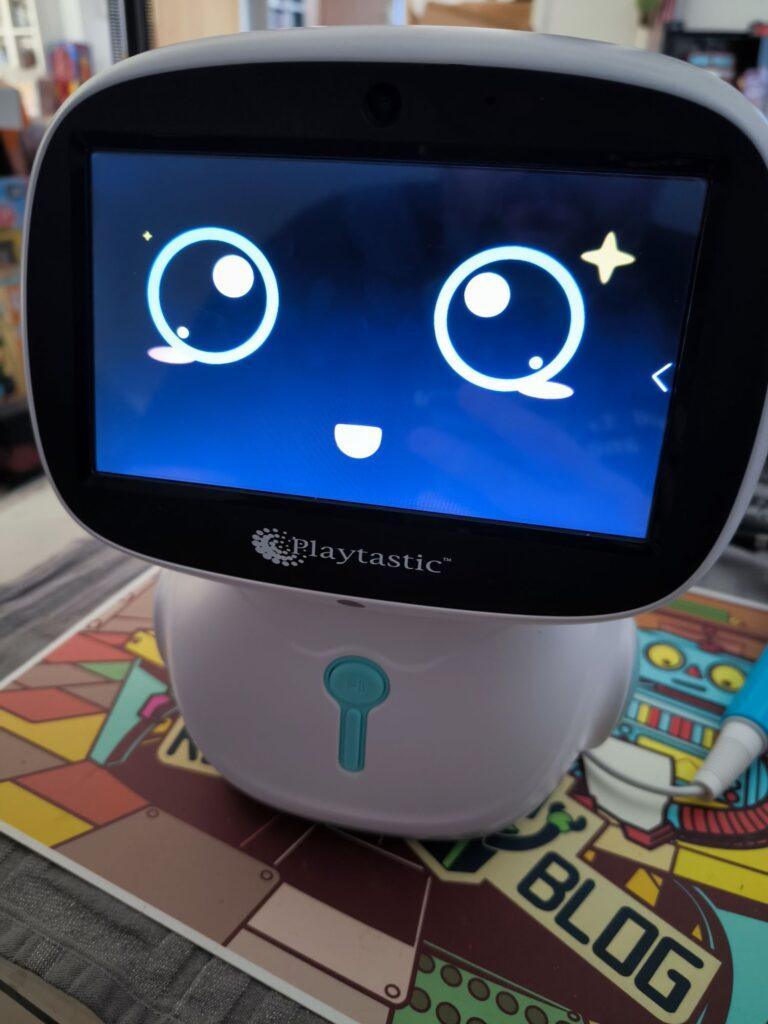
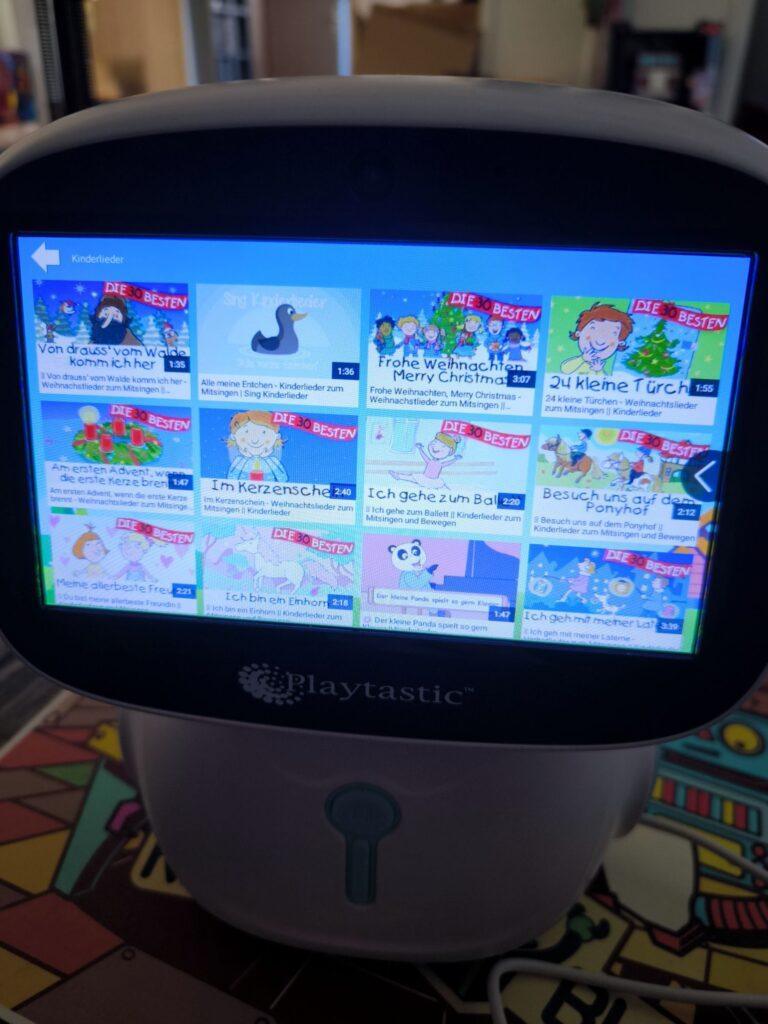
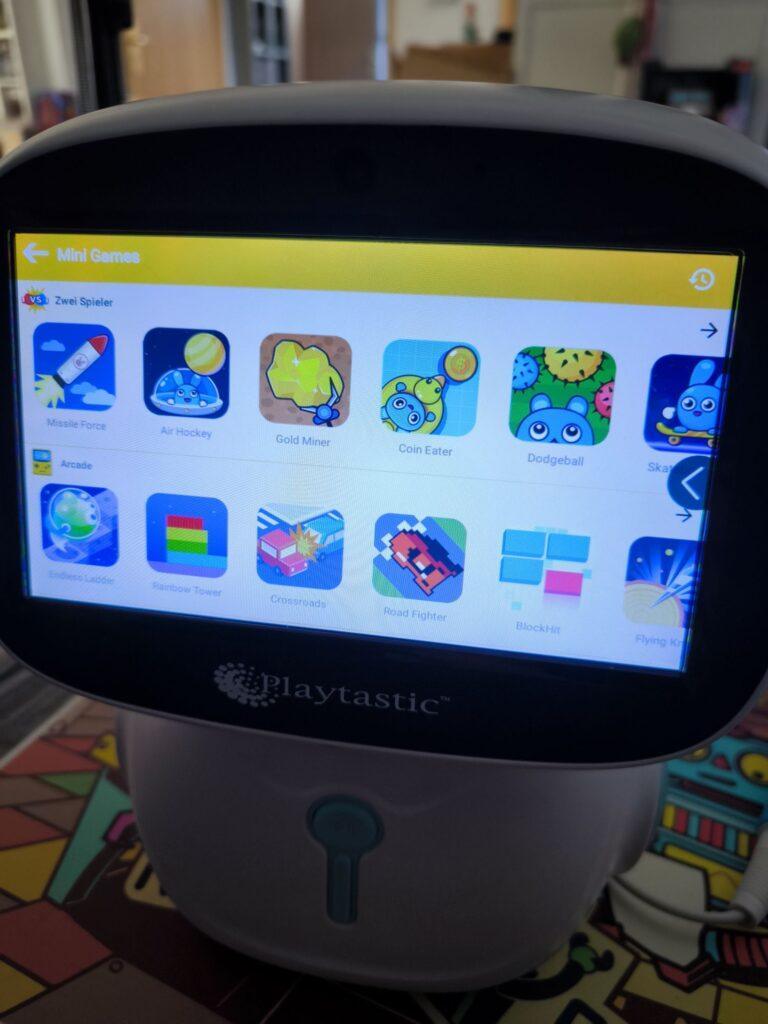
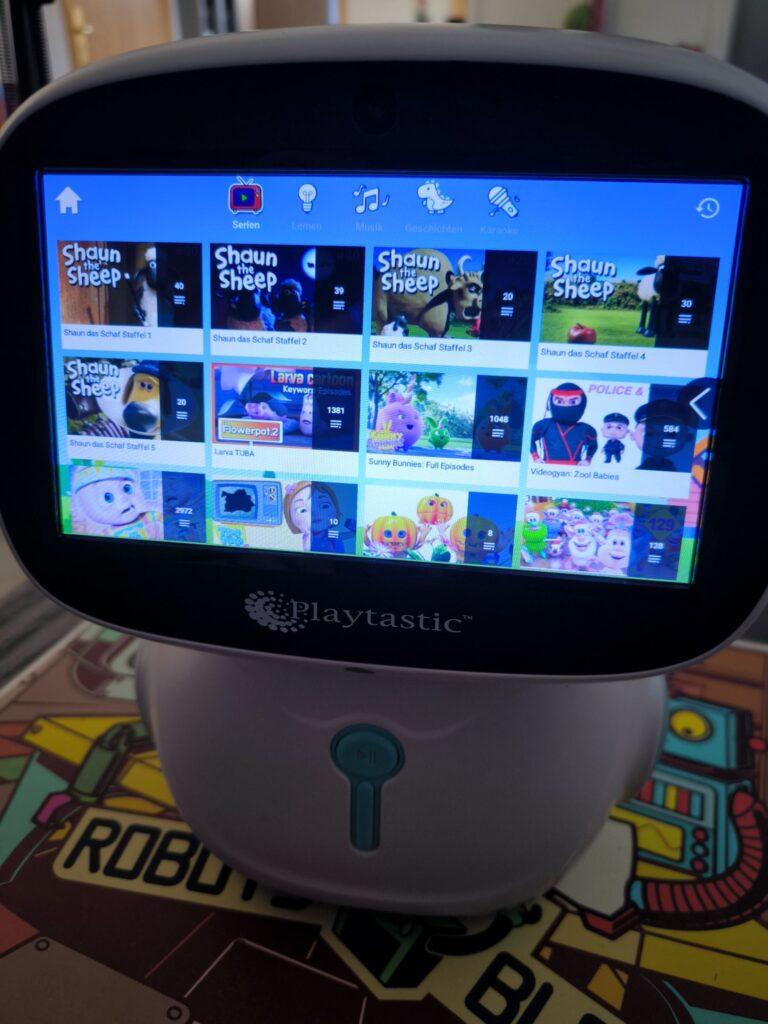
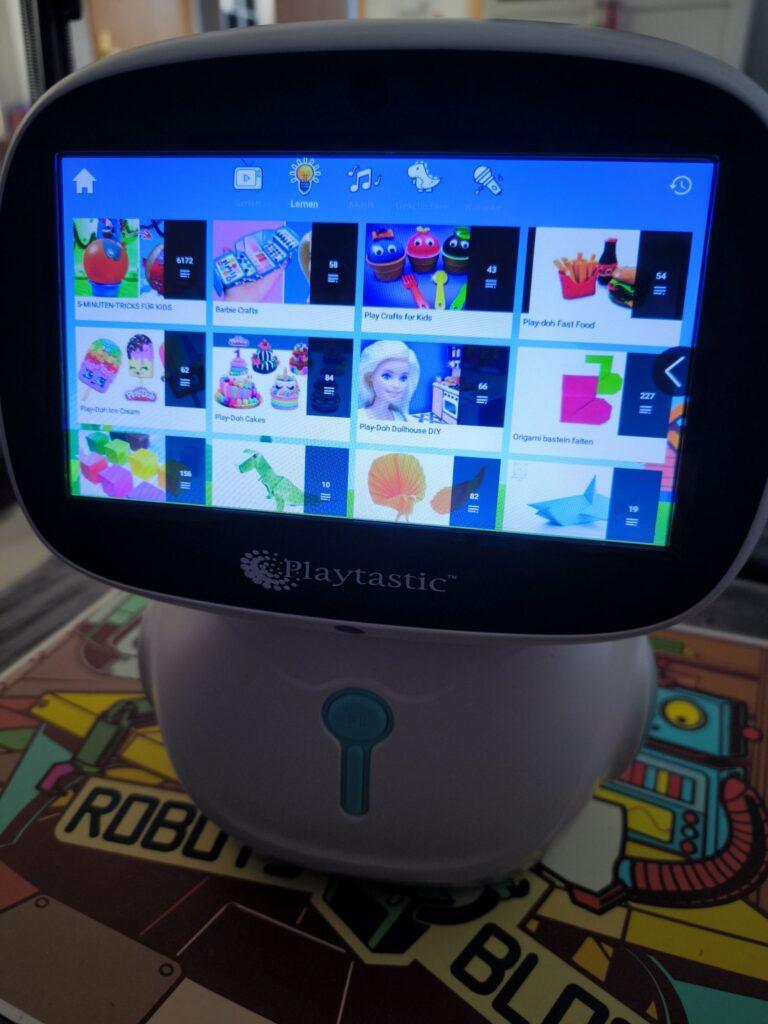
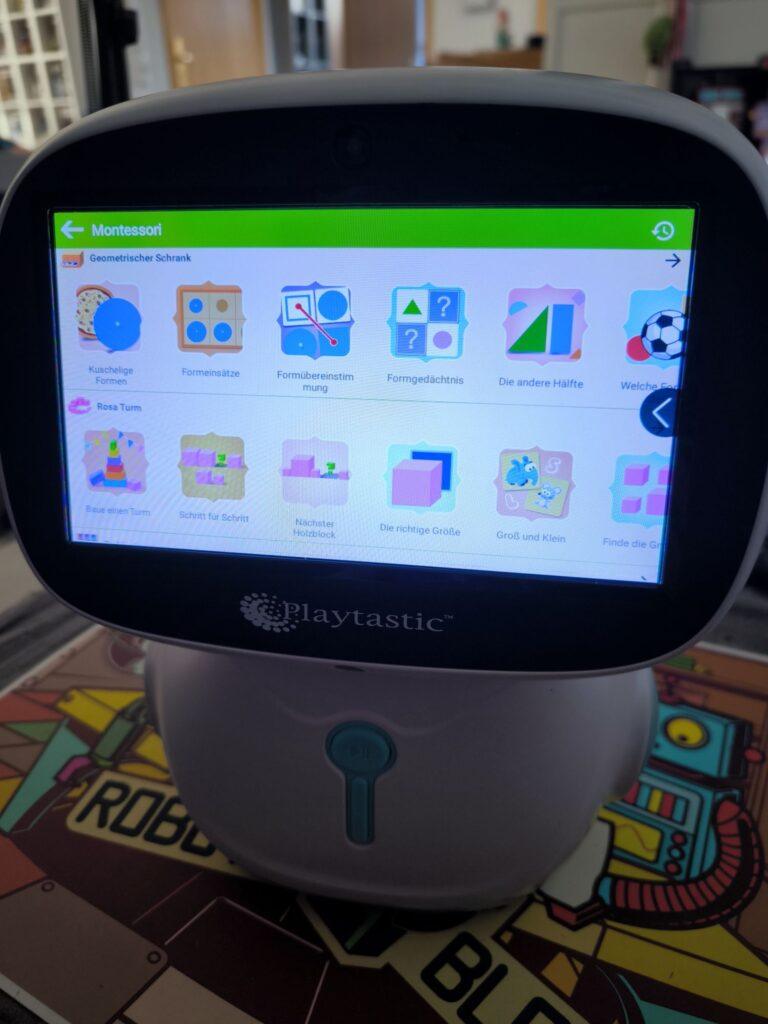
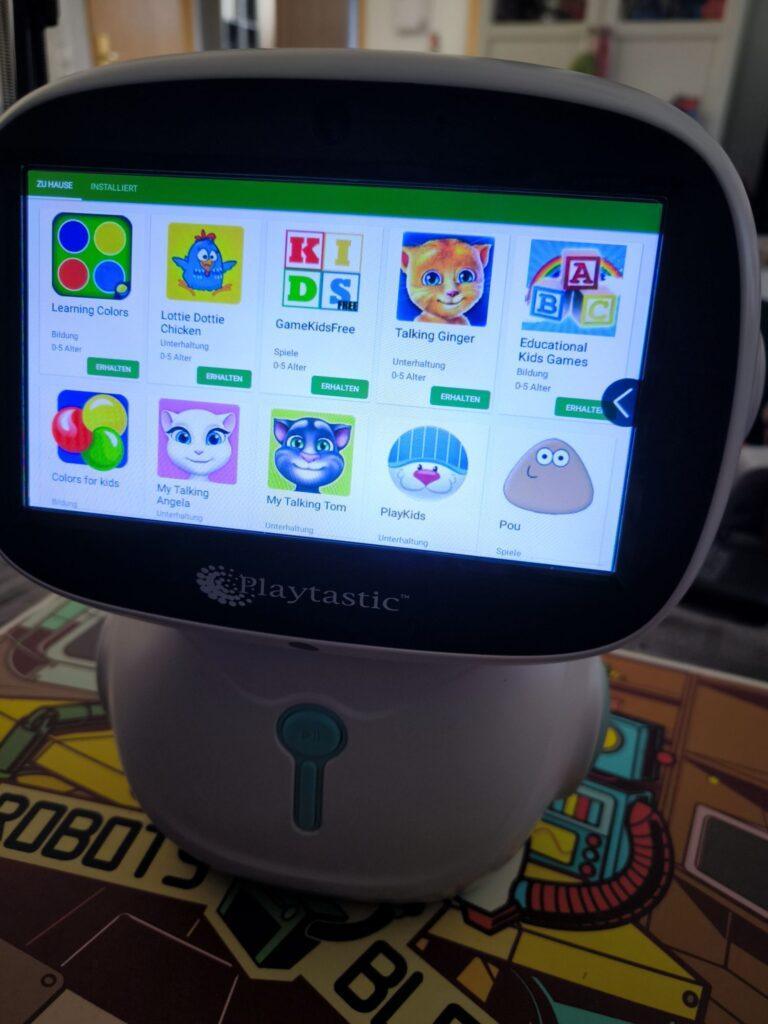
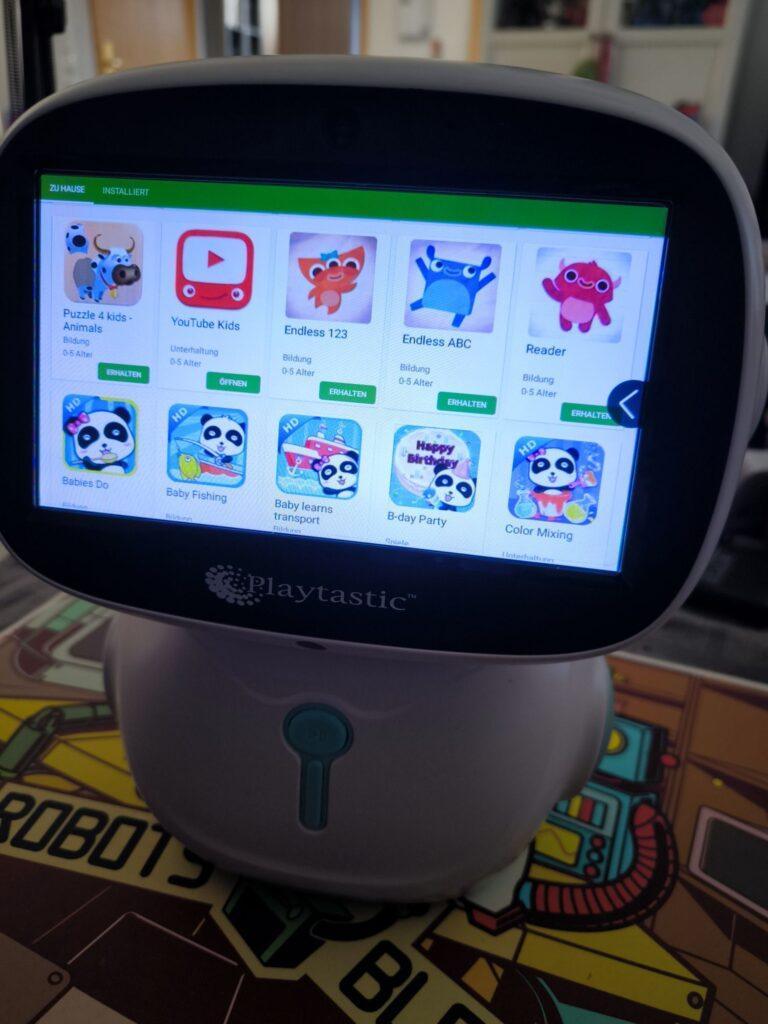
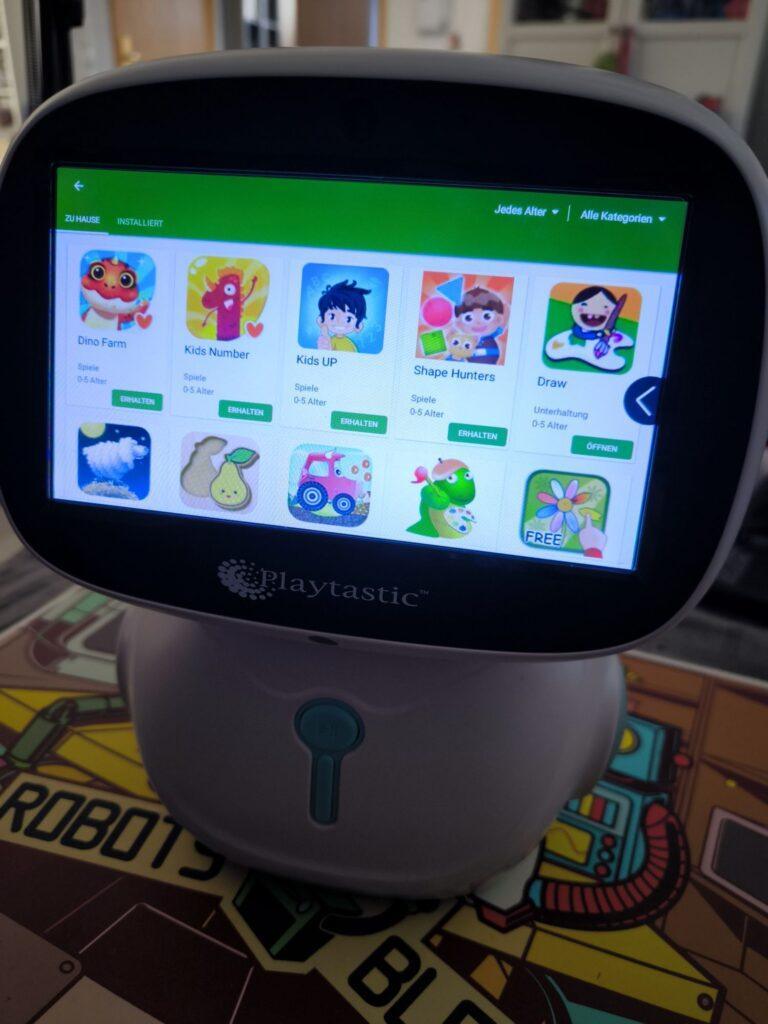
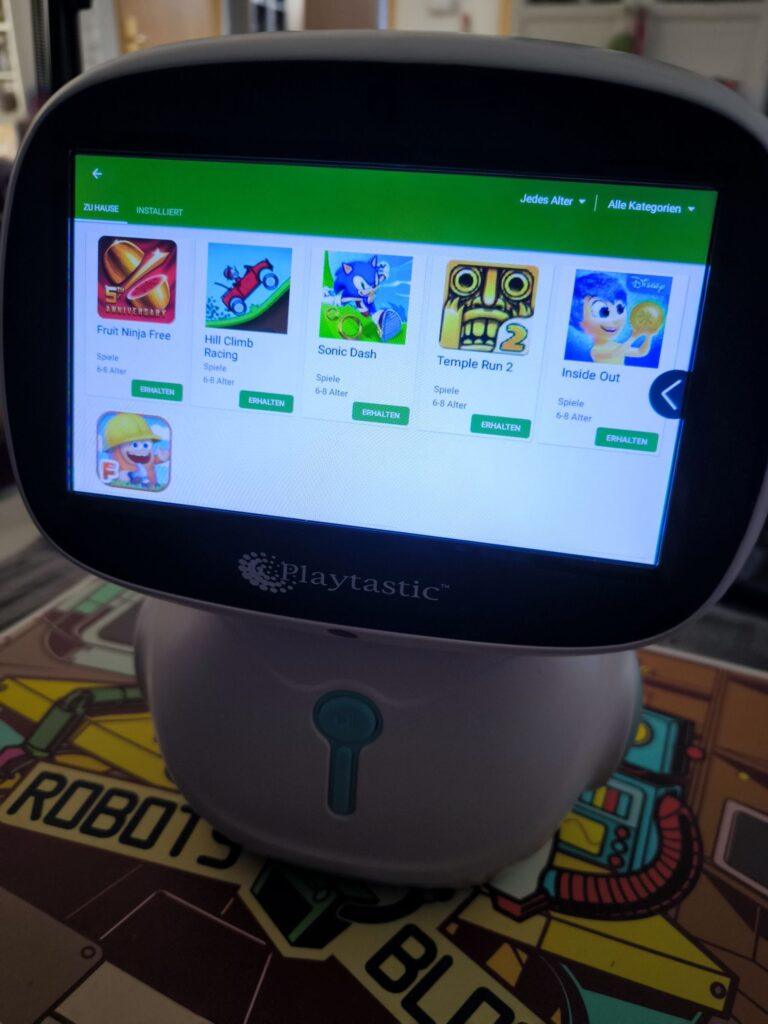
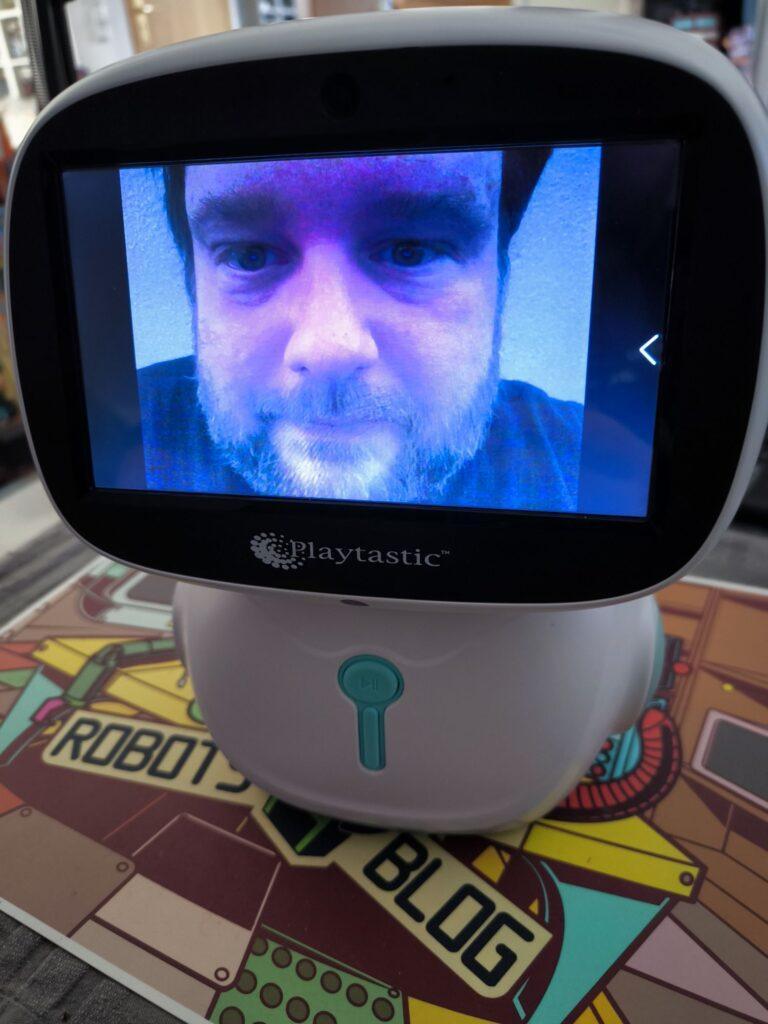
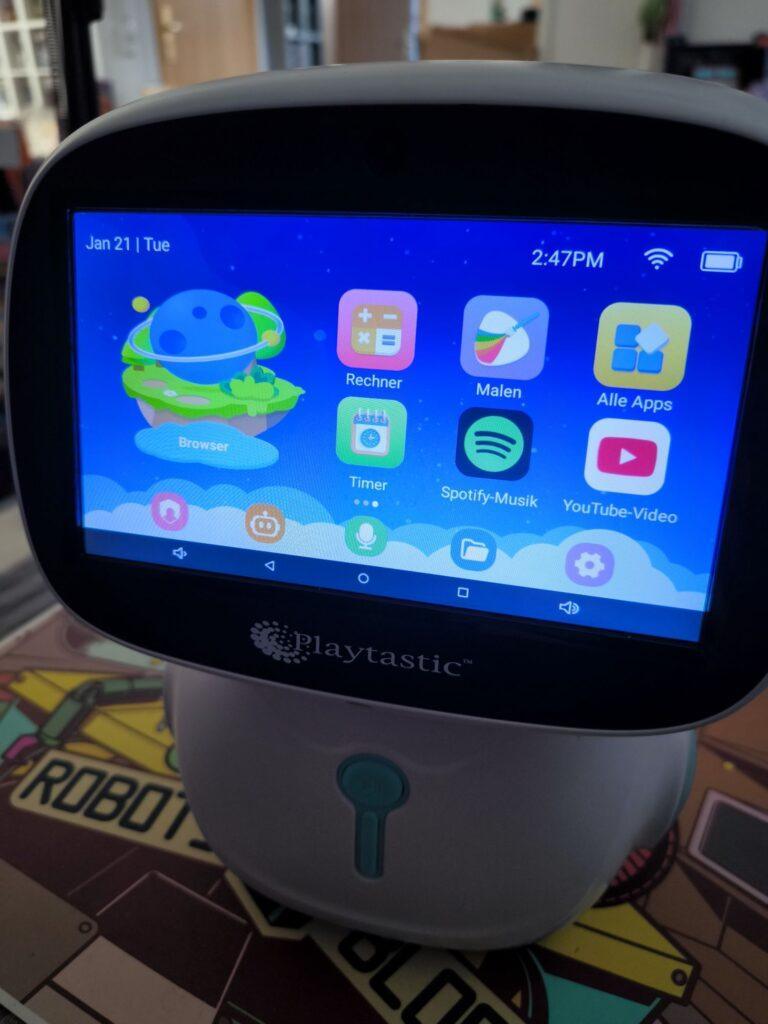
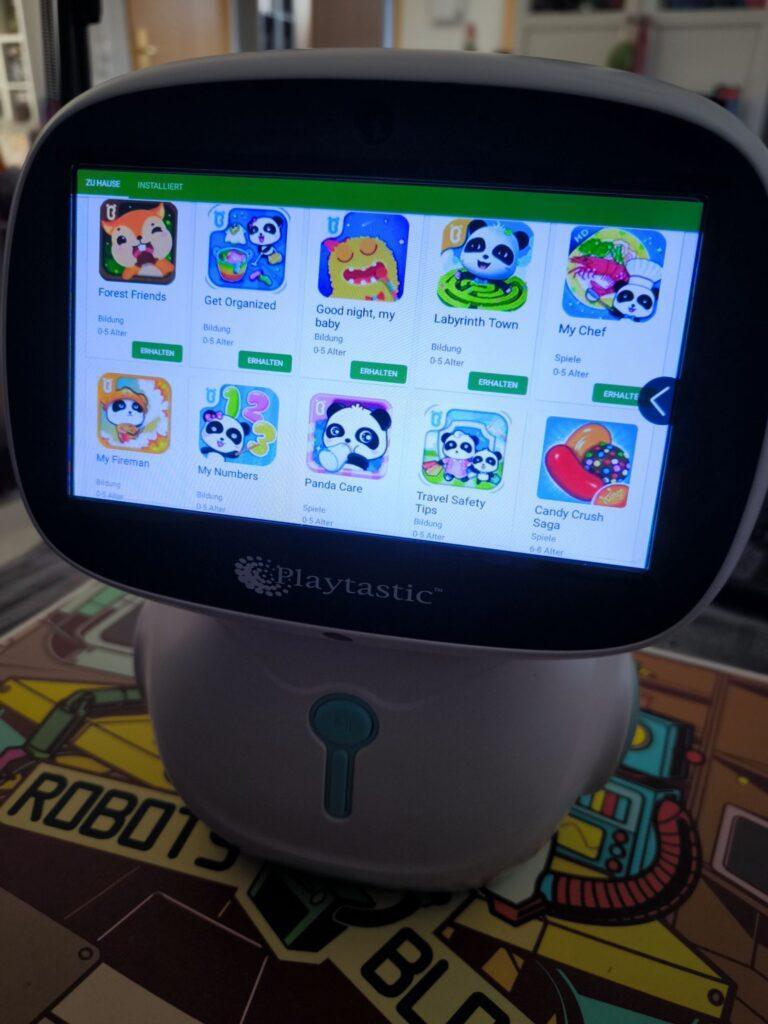
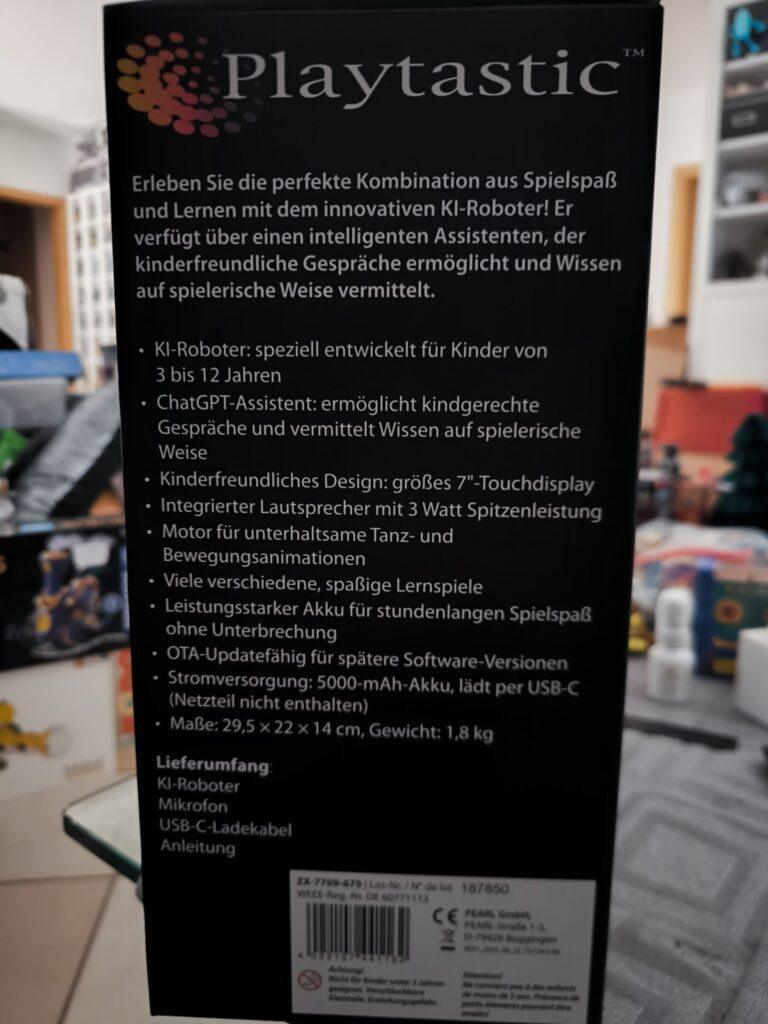
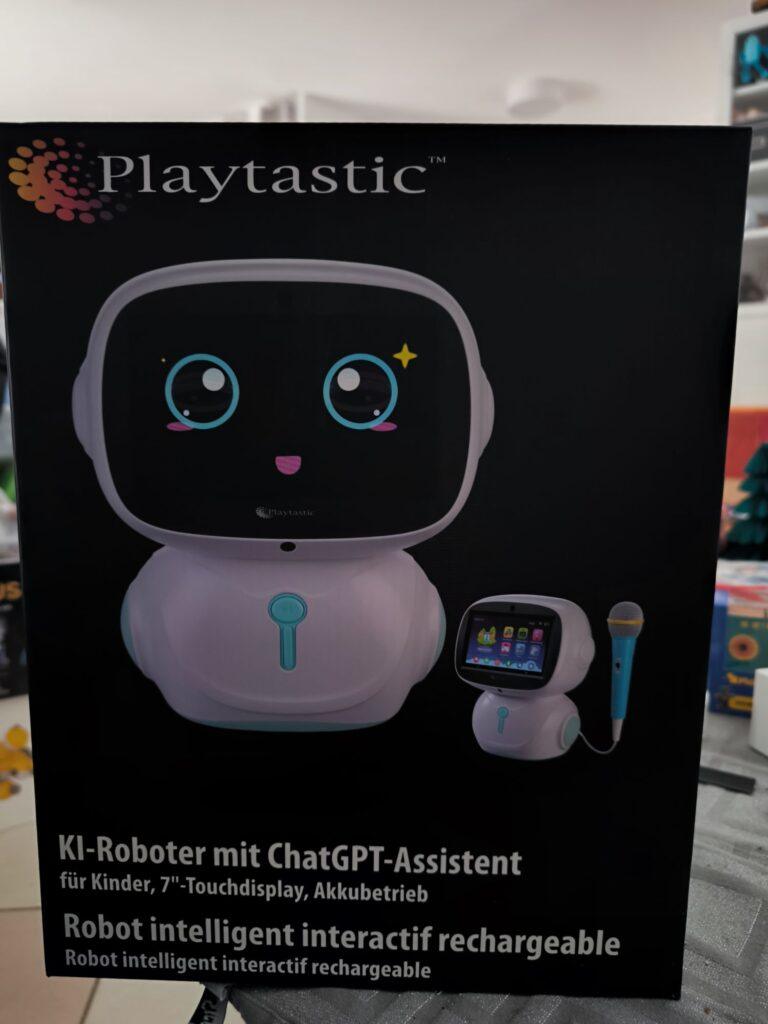
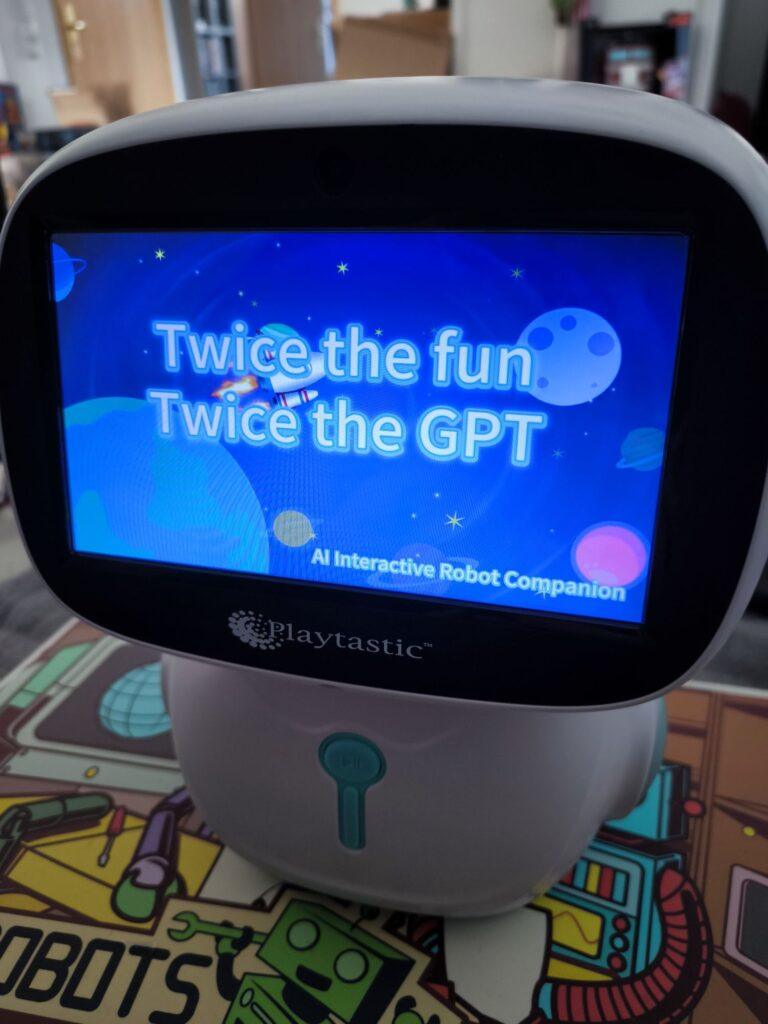
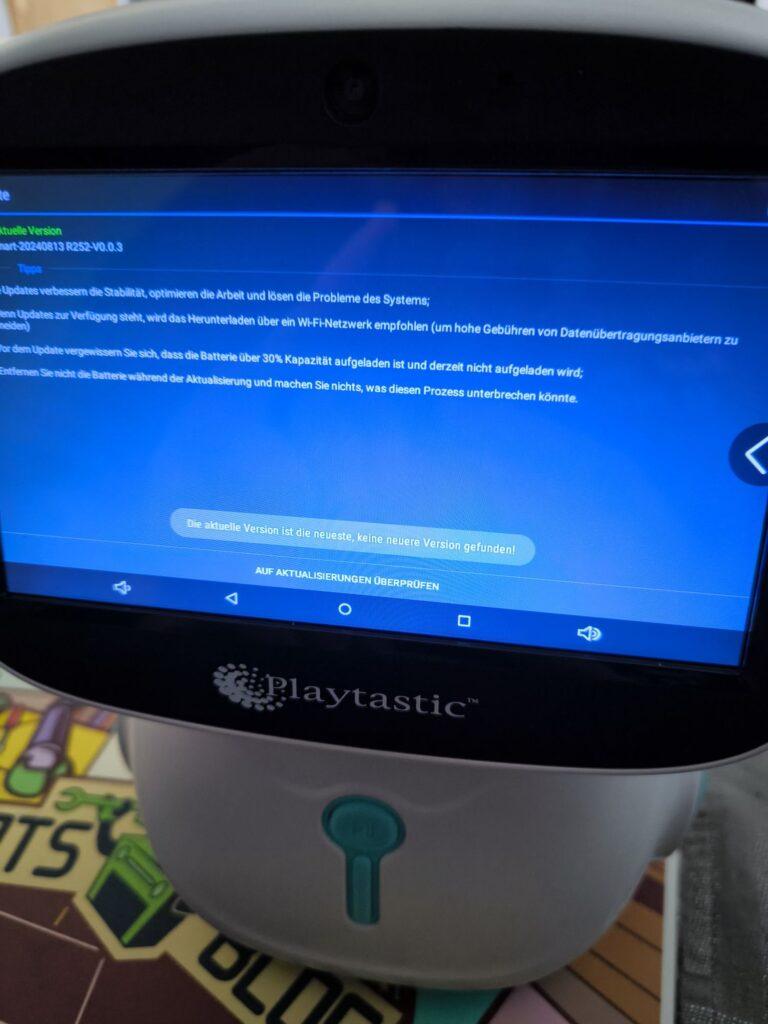
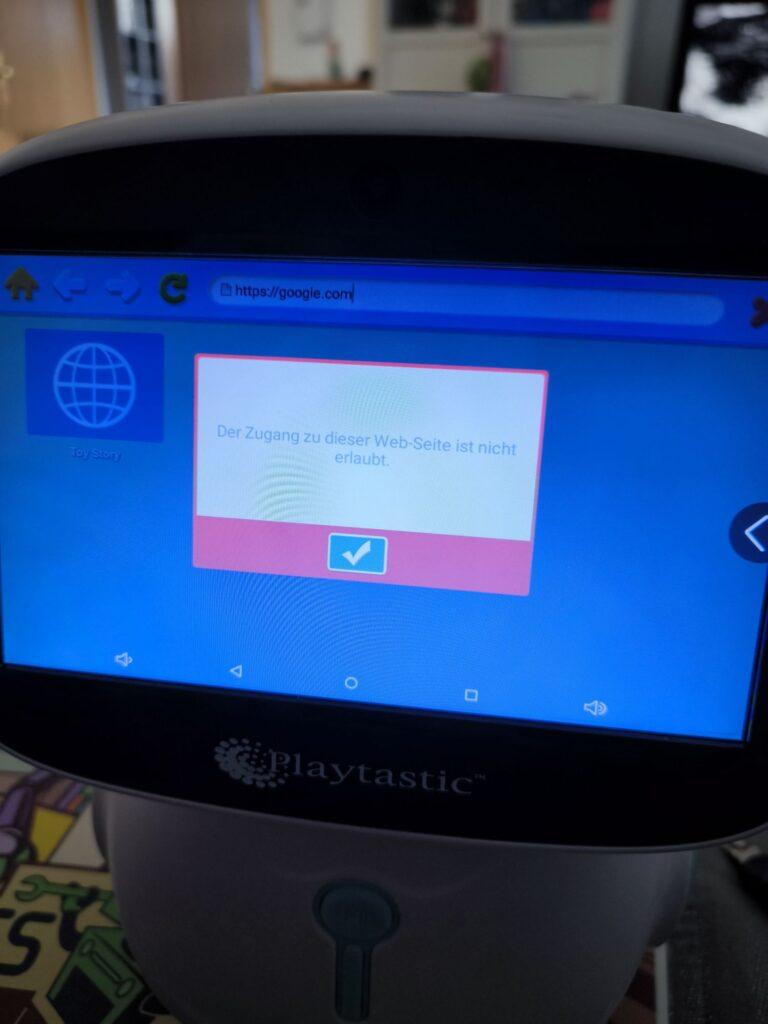
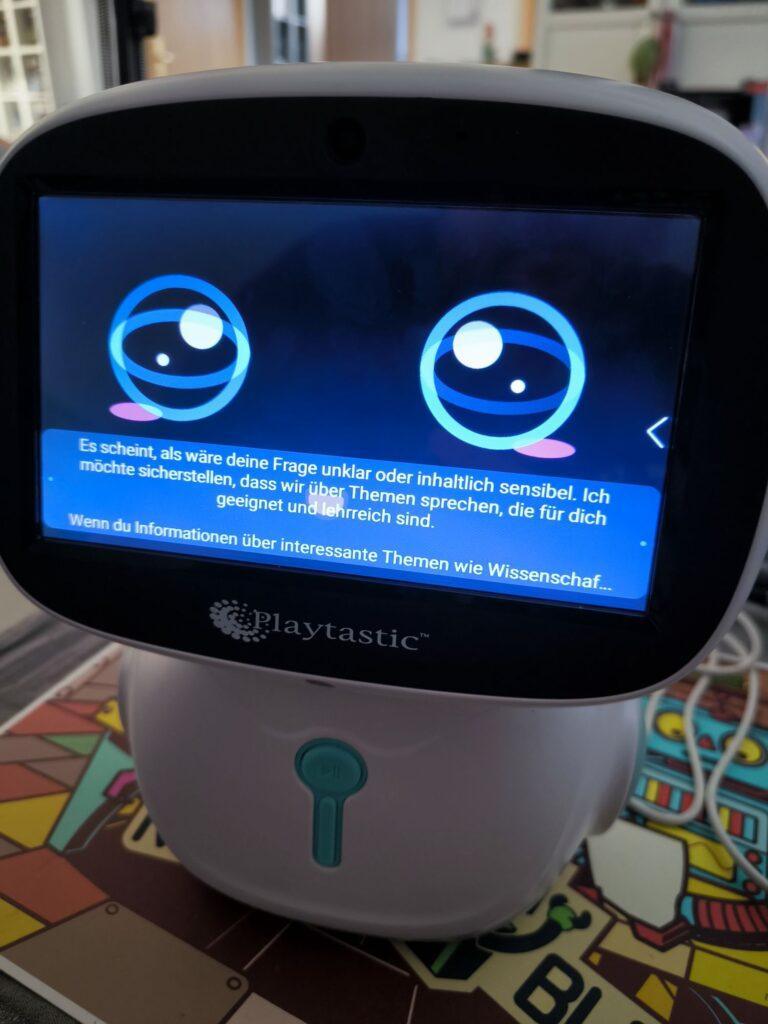
VARIOBOT varikabi Steckbausatz
Der VARIOBOT varikabi Steckbausatz ist ein innovatives, analoges Mini-Roboter-Kit, das entwickelt wurde, um Kindern und Jugendlichen ab 8 Jahren einen spielerischen und lehrreichen Einstieg in die Welt der Elektronik und Robotik zu ermöglichen. Dieser in Deutschland entwickelte und produzierte Bausatz zeichnet sich durch seine Vielseitigkeit, einfache Handhabung und pädagogischen Wert aus.
Technische Spezifikationen und Funktionen
Sensorik
Der varikabi ist mit drei hochsensiblen Lichtsensoren ausgestattet. Diese Sensoren können selbst kleinste Helligkeitsunterschiede wahrnehmen, was dem Roboter eine präzise Reaktion auf seine Umgebung ermöglicht.
Steuerung
Ein besonderes Merkmal des varikabi ist seine analoge Steuerung. Im Gegensatz zu vielen modernen Roboter-Kits, die auf digitale Programmierung setzen, funktioniert der varikabi über eine einfache analoge Schaltung mit nur zwei Transistoren. Dies macht den Bausatz besonders geeignet für Einsteiger, da keine Programmierkenntnisse erforderlich sind. Gleichzeitig vermittelt es grundlegende Prinzipien der Elektronik auf anschauliche Weise.
Verhaltensweisen
Der varikabi kann 12 verschiedene Verhaltensweisen zeigen, die durch einfache Umstellungen der Steckverbindungen aktiviert werden können:
- Hindernisvermeidung mit Fluchtverhalten
- Linienfolgen
- Licht- und Schattenverfolgung
- Objekte verschieben
- Kreisen auf hellen oder dunklen Flächen
- Suchen von Lichtquellen
- Flucht vor Lichtquellen
- Verfolgen von Objekten
- Vermeiden von Hindernissen
- Erkennen von Tischkanten
- Bewegen in Richtung heller Flächen
- Bewegen in Richtung dunkler Flächen
Bauweisen
Der varikabi kann in sieben verschiedenen Konfigurationen zusammengebaut werden:
- Käfer
- Hund
- Vogel
- Seelöwe
- Frosch
- Maus
- Giraffe
Jedes Tier hat seine eigene Farbe, achtet beim Bestellen also darauf, welches Tier ihr genau bauen möchtet!
Montage und Handhabung
Einfacher Aufbau
Der varikabi ist als Steckbausatz konzipiert, was bedeutet, dass alle Teile ohne Löten zusammengesteckt werden können. Dies macht den Bausatz sicher und einfach in der Handhabung, selbst für jüngere Kinder. Für den Aufbau werden lediglich eine kleine Zange und ein Seitenschneider benötigt.
Benötigtes Zubehör
Zum Betrieb des Roboters wird eine 9V-Batterie benötigt, die nicht im Lieferumfang enthalten ist. Mit einer Batterie kann der varikabi bis zu 12 Stunden lang betrieben werden, was für ausgiebiges Experimentieren und Spielen sorgt.
Pädagogischer Wert und Einsatzmöglichkeiten
Auszeichnungen
Der varikabi wurde mit dem renommierten „spiel gut“-Siegel ausgezeichnet. Diese Auszeichnung unterstreicht den hohen pädagogischen Wert des Bausatzes und bestätigt seine Eignung als lehrreiches Spielzeug.
MINT-Förderung
Der Bausatz eignet sich hervorragend zur Förderung von MINT-Fähigkeiten (Mathematik, Informatik, Naturwissenschaften und Technik). Durch den praktischen Umgang mit dem varikabi lernen Kinder grundlegende Konzepte der Elektronik, Mechanik und Robotik kennen. Erlernte analoge Schaltungen lassen sich später mit einem anderen digitalen, programmierbaren Robotersystem nachstellen und in Code übertragen.
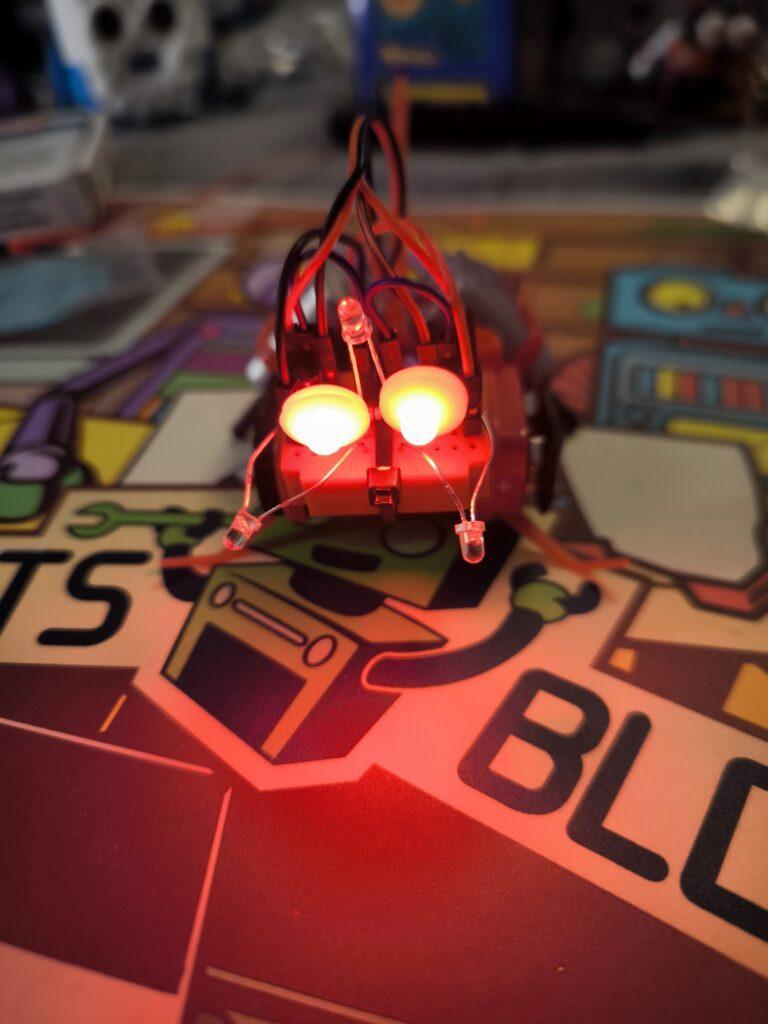
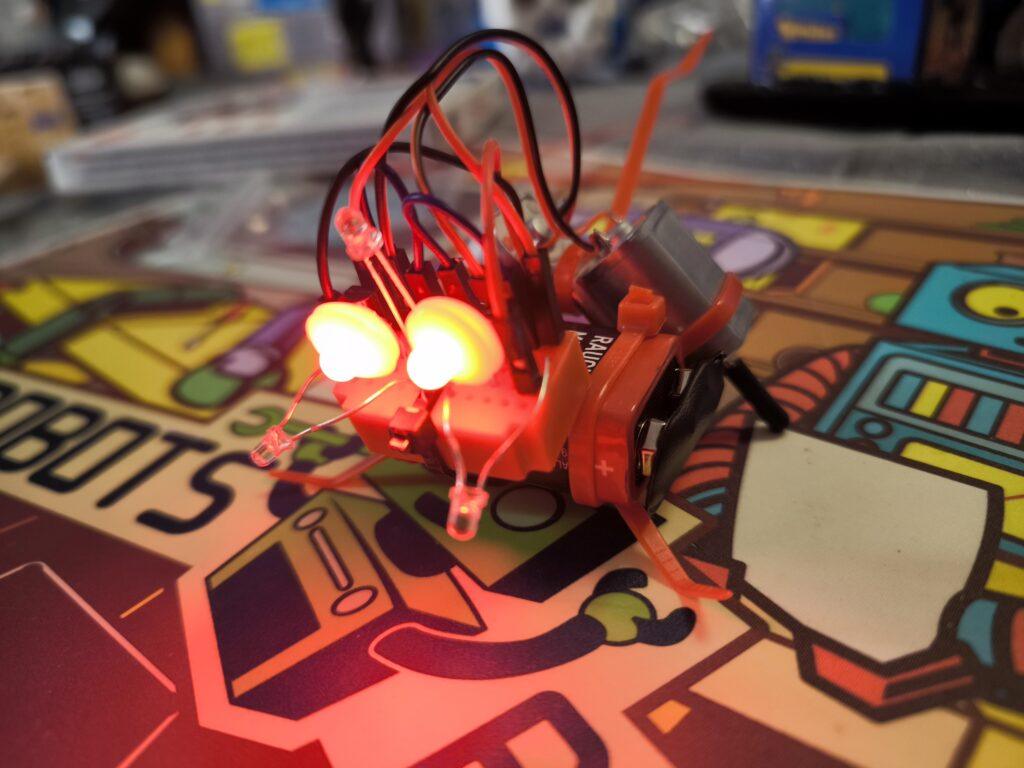
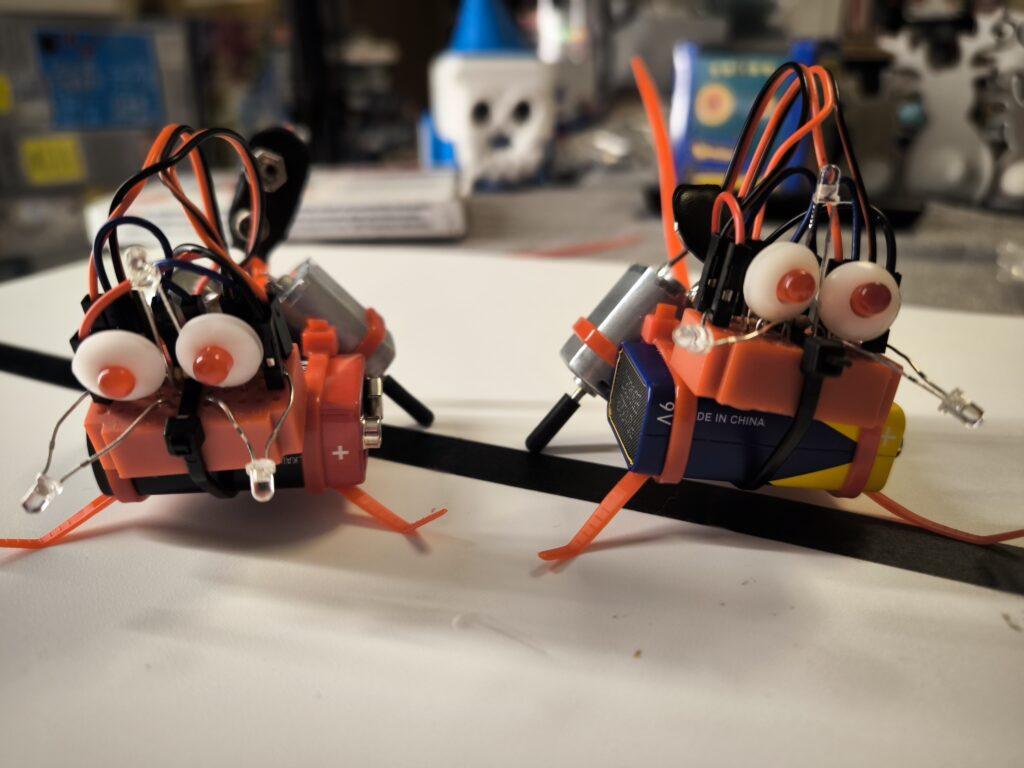
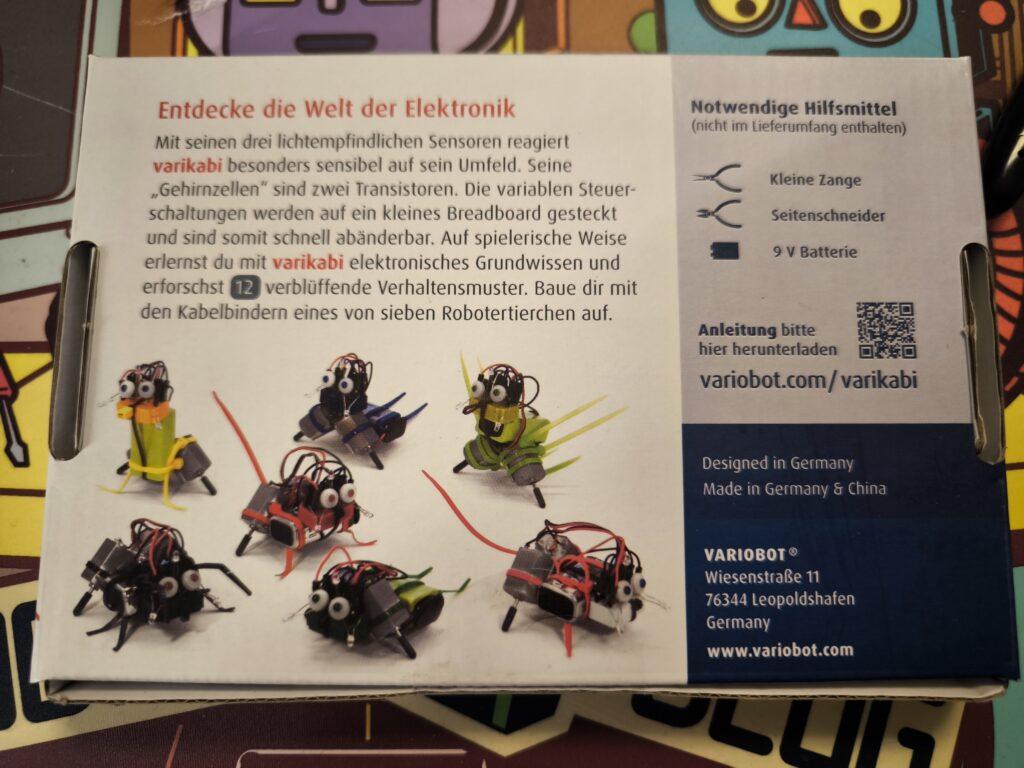
Varianten und Erweiterungen
varikabi FT
Neben dem Standardmodell gibt es auch eine Variante namens varikabi FT, die mit Fischertechnik-Bausteinen kompatibel ist. Dies eröffnet zusätzliche Möglichkeiten zur Erweiterung und Anpassung des Roboters.
Zubehör und Ersatzteile
VARIOBOT bietet verschiedene Zubehör- und Ersatzteile an, um den Roboter zu erweitern oder bei Bedarf zu reparieren. Dies verlängert die Nutzungsdauer und ermöglicht kontinuierliches Lernen und Experimentieren.
Fazit
Der VARIOBOT varikabi Steckbausatz ist ein durchdachtes, vielseitiges und pädagogisch wertvolles Produkt, das Kindern und Jugendlichen einen spannenden Einstieg in die Welt der Robotik und Elektronik bietet. Durch seine analoge Funktionsweise, die einfache Montage und die Vielzahl an Konfigurationsmöglichkeiten fördert er nicht nur technisches Verständnis, sondern auch Kreativität und problemlösendes Denken. Als in Deutschland entwickeltes und produziertes Produkt steht der varikabi zudem für Qualität und Nachhaltigkeit im Bildungsspielzeugbereich.
HP Robots Otto – Infrared/Line Tracking Sensors Test
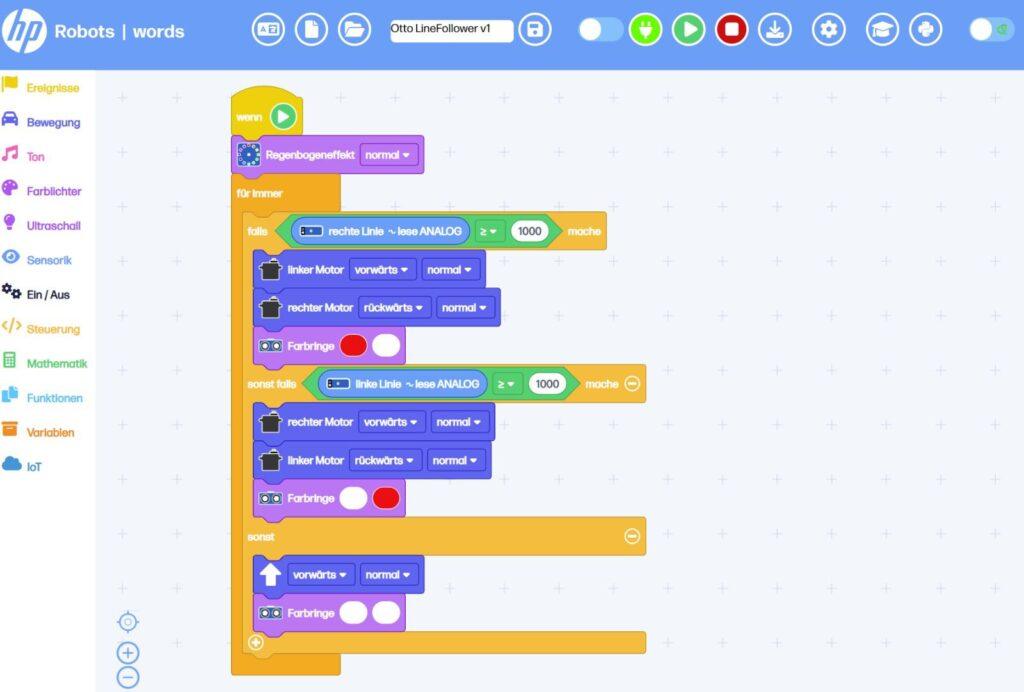
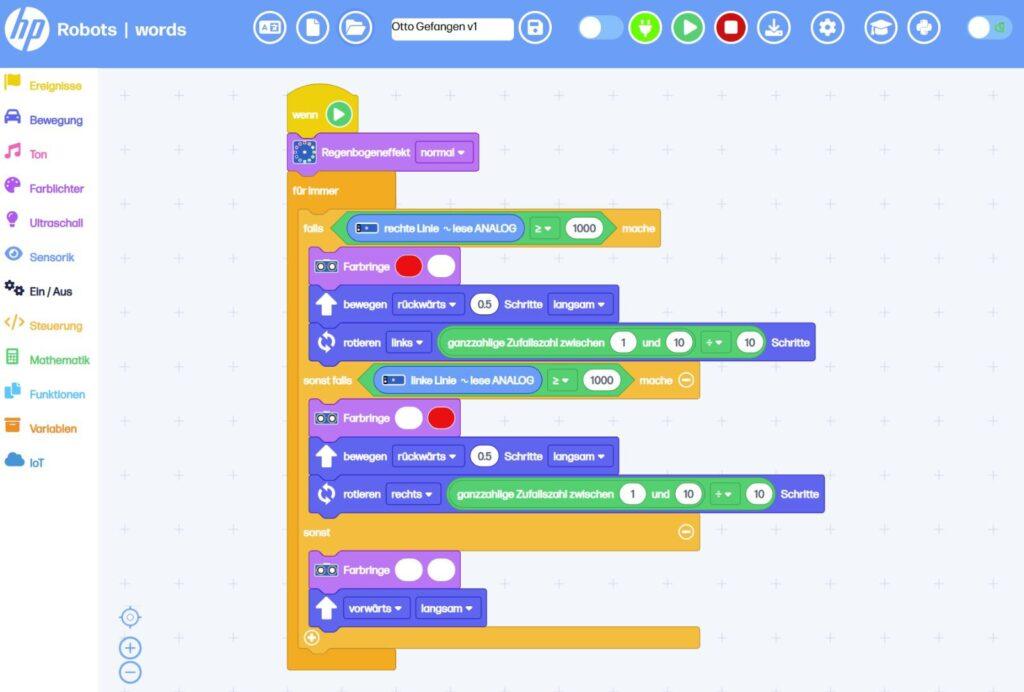
Variobot varikabi Build Video
